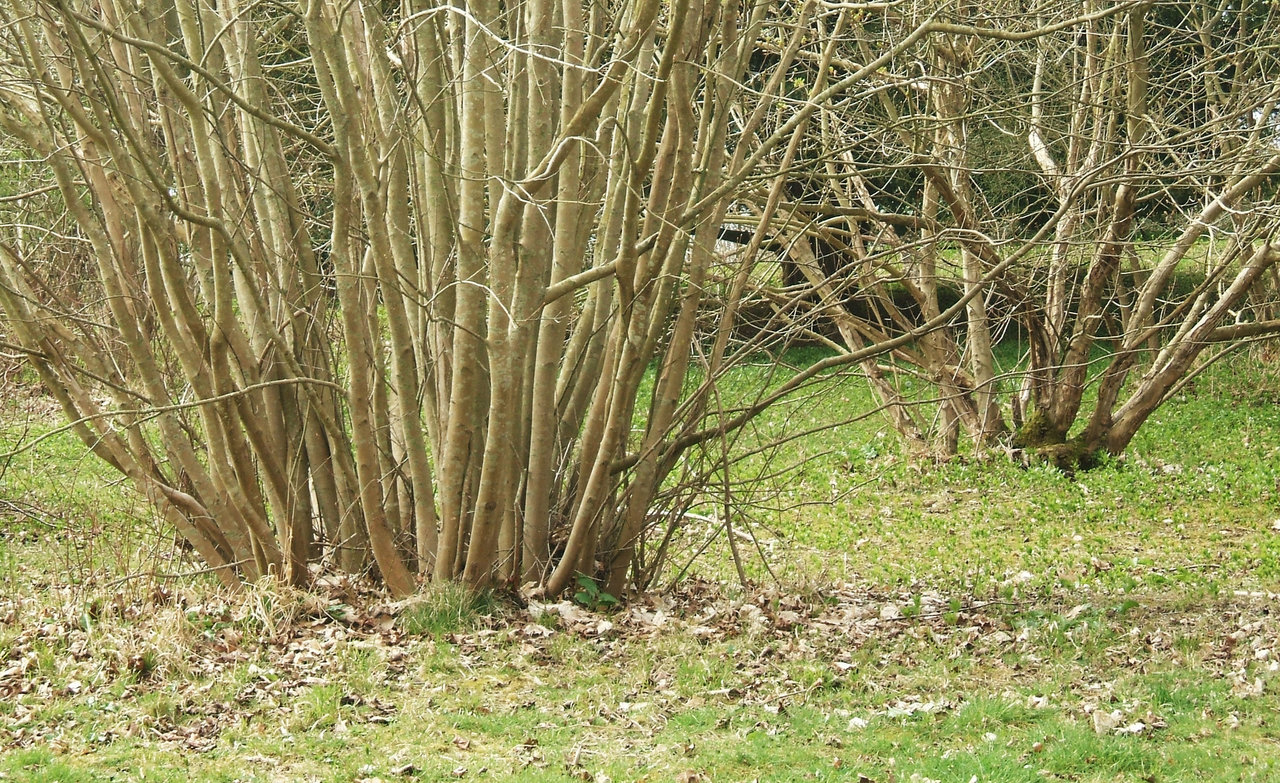
Coppice, pollard, espalier, pleach, and pooktre: No, it’s not a prestigious downtown law firm or names of Pokemon characters. Rather, they’re a bunch of fancy tree-training techniques that result in uniquely shaped trees. Known as arborsculpture, these techniques use living trees and woody plants as a medium to create structures and living art.
The practice of training trees and sculpting them into ornate forms is not a new concept. In some cases, it dates back to medieval times. These different methods of tree shaping result in living structures that are considered an art form by many, and I have to agree.
Want to know the best part? You don’t need to be an arborist or hire a tree service to take on these projects. While the art of tree shaping isn’t something you master overnight, it can certainly be a DIY project if you learn the techniques and follow basic tree care.
Coppice
Coppicing trees (pictured above) is a practice that has been utilized in woodland management for thousands of years and takes advantage of the ability for many mature trees to regrow shoots from the roots or stump. This lost art is gaining popularity again as a sustainable forestry management technique.
Certain species of trees (maple, ash, willow, elm, oak, and chestnut work well) are cut down all the way to their stump when dormant, creating what is called a stool. The harvested wood is then used for firewood or other purposes such as basketry, furniture building, mulch, or fodder for animals. These stumps then send up new growth the following spring that can be harvested again once it reaches the desired size. When practiced in a carefully thought out rotation, the woodland maintains a harvestable crop every year.
It is a slow process, often taking 25 years or more for the new growth to be large enough to harvest again. This new growth is more rapid than planting new trees due to the established root system. Larger stumps will generate more sprouts as well allowing for the harvesting of more wood over time from a property.
Benefits to coppicing
- As these sprouts grow it creates a habitat for woodland creatures, while increasing biodiversity on the forest floor since more sunlight reaches the ground.
- The constant pruning of the above-ground growth results in root dieback; this increases the humus content in the root zone, creating a nutrient-rich environment.
- Continuously cutting trees back to their stool keeps them at a perpetual juvenile stage, extending their life by hundreds if not thousands of years. Diseases also rarely affect this new growth, and storms do not damage the pliable branches on short stature trees as often as unpruned, larger trees.
More about coppicing trees: Midwest Permaculture, Small Woods, and Mother Earth News.
Pollard
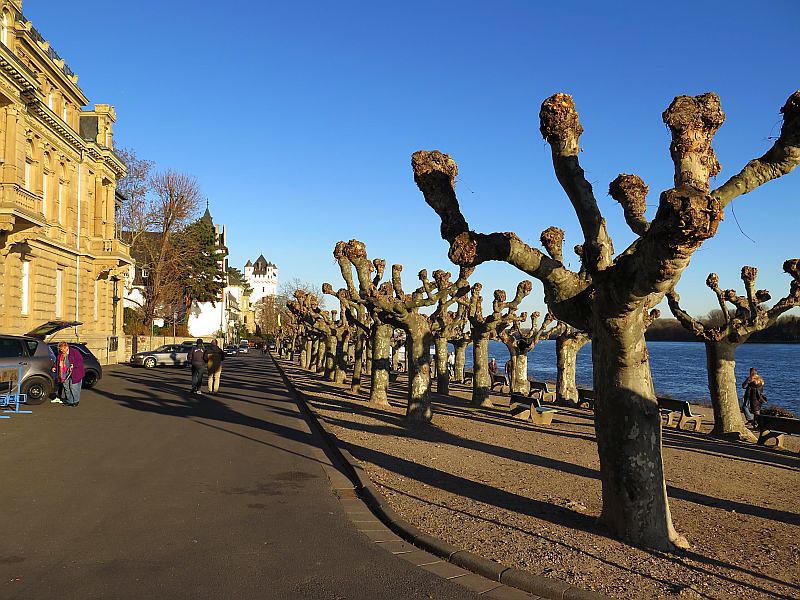
Pollarding and coppicing trees are similar tree-training techniques; pollarding trees is another extremely effective and sustainable way to produce firewood for many generations while enhancing biodiversity.
The practice of pollarding continuously harvests material from trees to encourage new shoot formation, but instead of cutting the tree back to the stool, it is cut at a height of 8 to 10 feet off the ground. This prevents livestock and deer from grazing on the tender new growth.
Pollarding trees dates back to the Middle Ages, allowing a higher yield of timber out of a given area, but today offers an alternative technique that works well in urban areas restricting the tree height. Cutting trees back to a designated height prevents them from encroaching on overhead utility lines. The harvested wood can then be mulched and used in other areas of the municipality.
More about pollarding: The Royal Horticultural Society.
Espalier
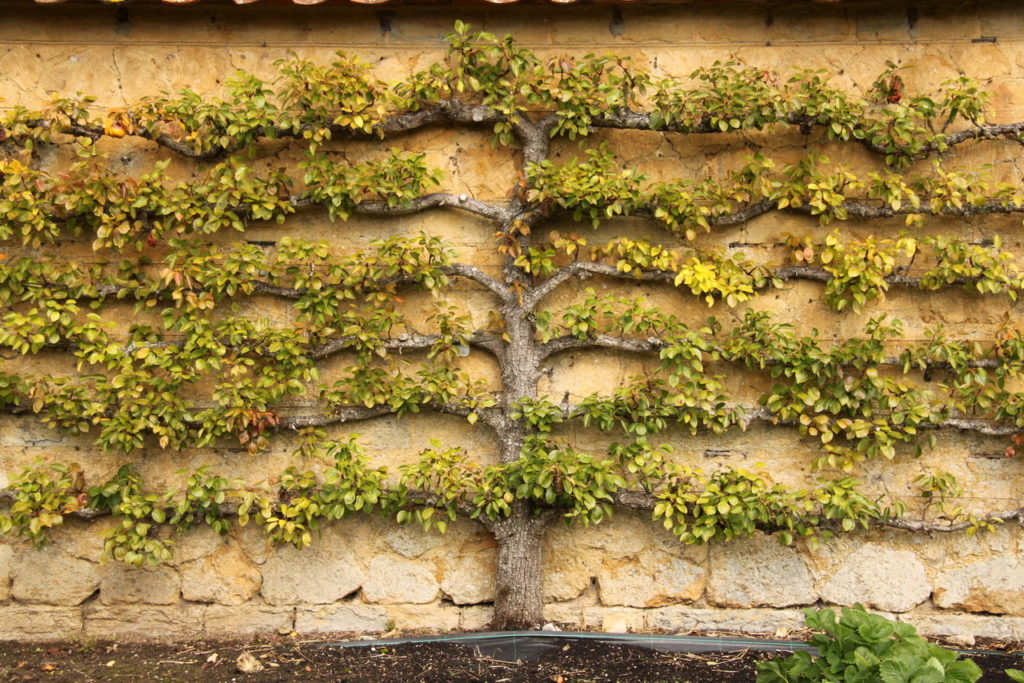
The practice of espaliering trees — pruning them so they occupy just one plane, growing flat against a fence or trellis — has become more popular again. For people living in homes with small backyards, this is a useful and fun tree-training technique. It also allows gardeners to create privacy screens or living fences with plants.
The idea behind espaliering a tree is straightforward. All plants have a primary growing point at the top of the plant. This is usually the trunk of a tree and is known as a leader. When the leader is removed from saplings, hormones within the tree force shoots to emerge from the buds found on the sides of the stem, below the cut. As these new side shoots grow you select the best ones. Train them to create boughs in the desired new shape. The common espalier shapes include horizontal cordon, candelabra, Belgian lattice, and fan.
Many trees are suitable to be espaliered against a trellis or wall as long as they have a climbing nature or stems/branches that are long and pliable. Some shade trees are used in espaliering but fruit trees are a common choice. Apple and pear are traditionally used. Their branches are quite pliable when the trees are young and their fruiting spurs can produce fruit for many years.
More about espaliering: Chicago Botanic Garden, OSU Extension Service.
Pleach
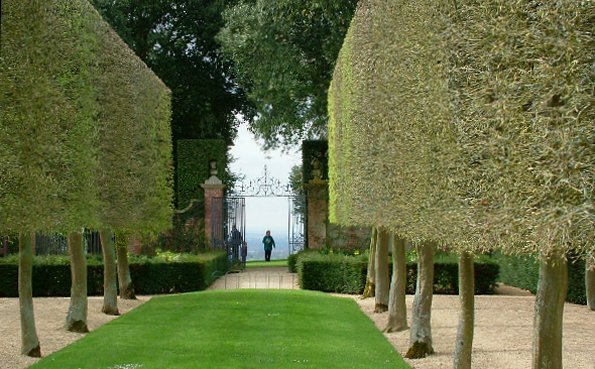
Pleaching is a technique historically utilized by farmers and ranchers where branches and limbs, both living and dead, are intertwined to create a hedge for stock control. The more branches are woven together, the thicker and stronger the hedge becomes. That utility made pleaching a cornerstone in early agricultural practices. Today, pleaching is also used to create arches, enclosed spaces, or living screens in backyards, a practice coined as biotecture.
Trees are planted in a single row, or in parallel rows about 4 feet apart within the row and 8 to 10 feet between rows. Construct a light framework to offer support until branches mature and harden. During the growing season, attach the limbs/sprouts to the framework, plaiting them with the lateral branches of neighboring trees. In the dormant season prune back unwanted branches, suckers, and water sprouts. Once the hedge is self-supporting, the framework can be removed.
If you are growing trees for pleaching look for those with “whippy,” pliable branches: lime, ash, beech, chestnut, hornbeam, apples, and pears.
Pleaching is similar to espaliering. But the resulting hedge is thicker and denser than the growing plant created when trees are espaliered.
More about pleaching: P. Allen Smith.
Pooktre: Newest Tree-Training Technique
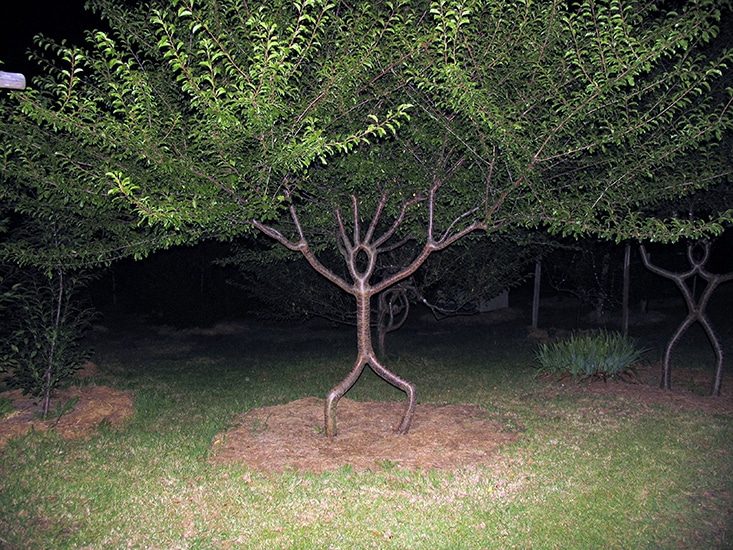
Pooktre is the process of gradual tree shaping that results in beautiful artistic designs and amazing living sculptures. The brainchild of the Australian duo Becky Northey and Peter Cook, pooktre is the newest of the tree-shaping techniques. Through training and the natural phenomenon inosculation — where trunks or branches of two trees grow together — these tree shapers have grown furniture and intricate designs known worldwide.
Of all of the tree shaping methods, pooktre is the most time and labor-intensive because of its difficulty.
More about pooktre: Pooktre Tree Shapers.
Main image credit: Coppiced Growth Rings, Dominic Alves, CC 2.0